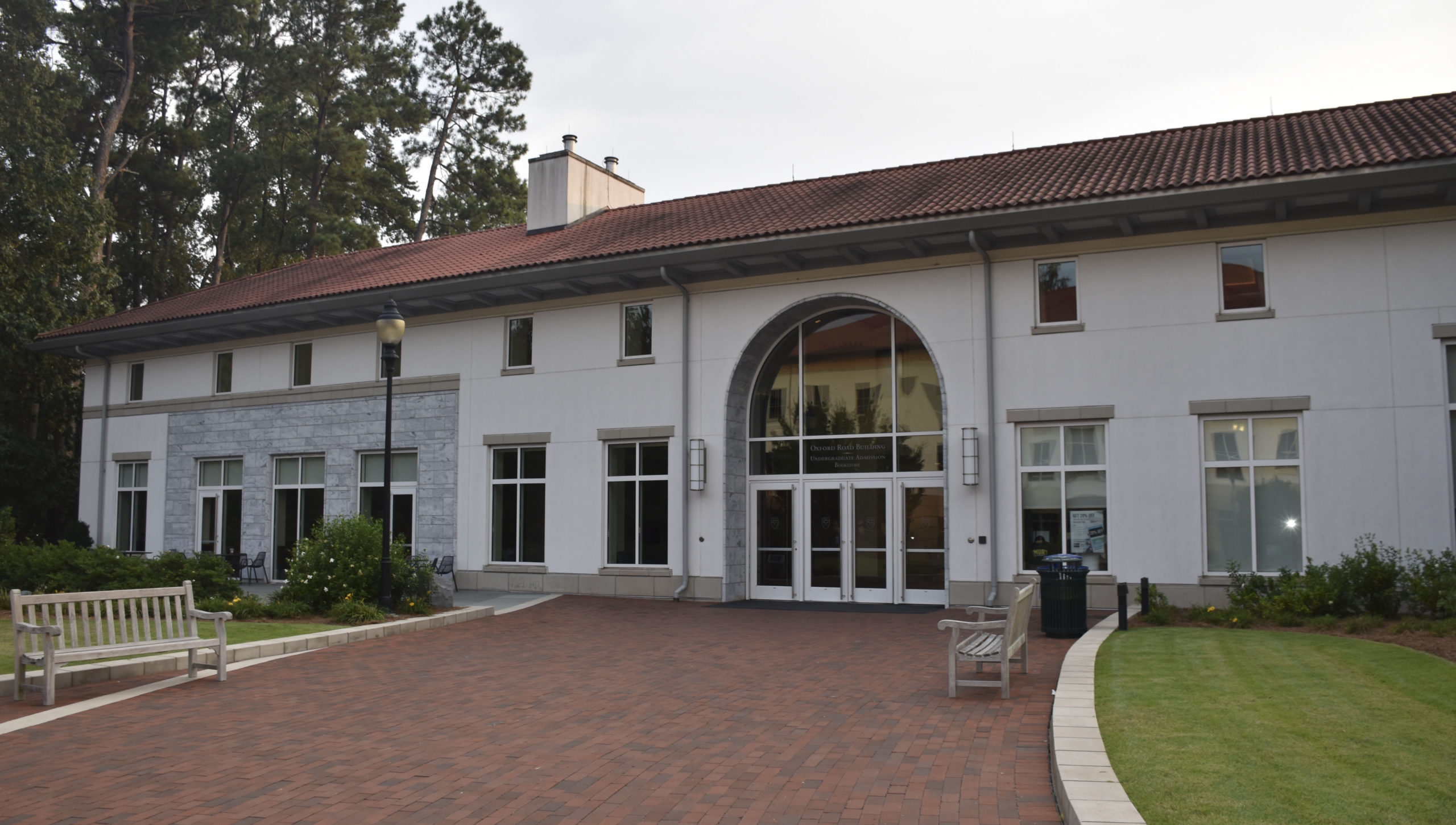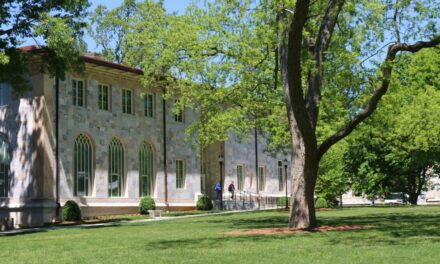The acceptance rate for students transferring into Emory College increased by over 9%, jumping from 23.5% in fall 2019 to 32.6% in fall 2020.
Though the number of transfer applicants increased by a consistent amount, more transfer students were admitted and enrolled in 2020. According to the Office of Institutional Research and Decision Support, the University admitted 272 students in 2018, 289 in 2019 and 446 in 2020. Of those admitted, 87 enrolled in 2018, 96 in 2019 and 144 in 2020.
While many students are reckoning with their decisions to take gap years and leaves of absences during the pandemic, those who transfered face their own challenges. In addition to settling into an unfamiliar environment, transfer students must navigate virtual classes, social isolation and limited on-campus activity.

Emory Admissions Building. (The Emory Wheel/Matthew Friedman, contributing writer)
Although Iara Al-Schamma (23C) considered transfering almost immediately after arriving at Case Western Reserve University (Ohio) in fall 2019, the pandemic afforded her the space to fully reflect on her experience there and finalize her decision.
“I realized, ‘If I’m not excited to be going back to a school, then why am I going?’” Al-Schamma said. “If anything COVID solidified that I did not want to go back to Case.”
Conversely, spending the latter half of the spring 2020 semester away from campus complicated Helen Bradshaw’s decision to transfer from Emory to Northwestern University (Ill.) because she lacked immediate experiences at Emory as a baseline.
“I was at home and I wasn’t in that school environment, so I was basing all of my feelings off of memories of what the campus was like,” Bradshaw said. “It was definitely frustrating because I just wanted more than anything to be back in that space so I could really make a decision based on my surroundings.”
For Mina Masody (22B), who sought greater academic rigor after spending two “easy” years at the University of North Florida (Fla.), Emory’s scholastic reputation was too alluring to turn down. However, taking entirely virtual classes in her first semester without a social safety net was daunting at times.
“It was definitely a hard decision,” Masody said. “I knew that I would be online in the fall. Even though they invited transfers back, I was like, ‘I should just stay online.’ It was hard going through that as a transfer out of a new school.”
Academics were also a major factor in Bradshaw’s decision. She discovered a passion for journalism during her freshman year, and Northwestern has the prestigious journalism program Emory lacks. However, at Northwestern, Bradshaw has been unable to recreate the tight-knit community she found during her freshman year at Emory, a problem exacerbated by COVID-19 restrictions.
“All my best friends, for the most part, were from my single floor last year, so we found each other pretty quickly and it’s definitely not that experience here,” Bradshaw said. “Making friends is more tricky, but it’s not impossible.”
Forming relationships during the fall semester was nearly impossible for Al-Schamma, who battled a 13-hour time difference from her home in Singapore. However, joining a sorority helped Al-Schamma get to know people more intimately. She currently lives with two of her sorority sisters in an Atlanta apartment and is grateful for the support she received from the Emory community.
“I’ve never been a part of a community that wants to support each other and wants to actually see you succeed,” Al-Schamma said. “I definitely think that Emory has a much stronger sense of community and pride than where I was before.”
While living on the Clairmont campus this semester, Masody was able to find a community of transfer students. The most challenging aspect of her transfer process, as someone who spent nearly half of her undergraduate experience at a different school, was reestablishing herself in clubs and leadership positions.
“You’re competing with freshmen while you’re a junior,” Masody said. “That’s tough, especially when those freshmen, or anyone you’re competing with, have already spent time at Emory… It’s like you have to catch up. You have to run faster than everyone else is running.”
Masody indicated that the already “strenuous” transfer process was further complicated by Emory’s inadequate resources to assist transfer students acclimate to the school. She receives advice from classmates and commiserates with other transfers, but having to learn the day-to-day logistics on her own has been an unexpected challenge.
“Emory doesn’t really care once you’re here,” Masody said. “There was no support system for where things are, how to navigate campus… I wish there were more advisors that were more accessible to transfer students within the first two weeks of classes.”
The Office of Undergraduate Admission provides information and resources about the transfer application process on their website.
Claire Fenton (she/her) (24C) is a Pittsburgh native majoring in quantitive sciences and linguistics. Outside of the Wheel, she is the treasurer of Emory Data Science Club and Girls Who Code. When she’s not training for half marathons, you can find her watching the Penguins dominate the Philadelphia Flyers and reading Agatha Christie novels.







